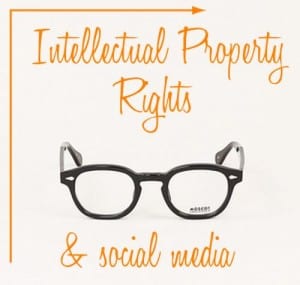 Social media platforms, such as Twitter, Facebook and LinkedIn, are a great way to network and to generate business. What you may not know is that by agreeing to these sites’ Terms of Service, you essentially permit these platforms to use whatever you publish online and license that material for their own commercial benefit. Furthermore, you are not entitled to any royalties or other compensation for your efforts.
Social media platforms, such as Twitter, Facebook and LinkedIn, are a great way to network and to generate business. What you may not know is that by agreeing to these sites’ Terms of Service, you essentially permit these platforms to use whatever you publish online and license that material for their own commercial benefit. Furthermore, you are not entitled to any royalties or other compensation for your efforts.
So what happens if you’ve already tweeted about your invention idea or sent a LinkedIn publisher the first draft of your novel? How do navigate intellectual property rights and social media?
Your Rights Under Current Intellectual Property (or IP) Law
On its Statement of Rights and Responsibilities, Facebook proclaims “Your privacy is very important to us.” And that may be, but so is your content.
By agreeing to Facebook’s terms of service, you agree to give Facebook “non-exclusive, transferable, sub-licensable, royalty-free, worldwide license to use” for any content that has intellectual property rights. This means you give Facebook the right to use your content for nothing.
That’s not a big deal for grandma posting pics of her new grandkids, but it’s a huge deal for professional photographers trying to make money off their photos. In lawyer speak, Facebook could conceivably sell all your content to a third-party and not pay you a dime. And in fact that’s what has already happened.
In 2009 this happened to the Smiths. Peter Smith, a happily married man from Lynchburg, Va., was on his Facebook page when a curious ad appeared, according to MSNBC.com’s Redtape Chronicles.
“Hey, Peter,” the Facebook ad read, “Hot singles are waiting for you!”
Not only was Peter Smith married but the photo used in the ad was of HIS WIFE. A third-party application had mined Facebook’s data, collected a photo of Cheryl Smith and used it in its advertising. Cheryl, who runs culturesmithconsulting.com, blogged about her experience. Facebook eventually stopped the ad but didn’t LEGALLY have to.
The only thing stopping this from happening to you is Facebook’s good graces. Facebook said the ad was a violation of its terms of service and the offending ad was removed.
On April 14, 2010, the Library of Congress announced it would archive every public Tweet and make them available to the public. Sounds great on the surface. But what if you’re an inventor and you Tweeted a pic of that widget that’s going to solve our energy problems? Twitter can sell that Tweetpic to anyone it wanted.
To protect your content use watermarked copyright symbols on photos and slide presentations. You can also use the copyright symbol on copyrighted written materials.
What If Your IP Is “Scooped”?
 If your IP has been “scooped” and reposted without your authorization, take steps immediately to alert the person responsible. Hopefully, the perpetrator will comply with your request and no further action will be necessary.
If your IP has been “scooped” and reposted without your authorization, take steps immediately to alert the person responsible. Hopefully, the perpetrator will comply with your request and no further action will be necessary.
If not, alert the site where it is posted. Facebook, Google+, YouTube, Twitter and other social networks do give you an out if you think your IP rights have been violated. File a complaint, and in many cases the content will be removed. That’s how the Smith’s ad got pulled. But you have to prove that you own it, which means filing for copyrights, trademarks, registering work etc. This, of course is an onerous burden for a small creative business.
Of course, the person who posted your material may send a counter-notice to the service provider and state that, under the terms of fair use, he or she thinks that the material was taken down unfairly. Fair use is a legal defense stating that copyrighted material may be used for limited and “transformative” purpose without permission of the copyright holder. Should this happen, the service provider may put your material back online unless you file a lawsuit.
In the case of plagiarism, you may want to follow additional steps to fight digital plagiarism.
How to Instruct Your Employees
Here are some easy guidelines to follow in training employees on social media use to steer clear of IP violations:
- Post your own content. If you do this you only have to worry about battling social media giants for the right to use it.
- Use free-use, public domain content.Not good at creating your own images? Then go check these open use image websites out:
- Don’t use an image when you haven’t determined its copyright status. You could get caught like the copywriters at Webcopyplus, who had to pay $4,000 for a photo they simply grabbed from the web. “Well, frankly, we screwed up,” read a post on the company’s site. “It’s an expensive lesson on copyright laws that we wish to share with other marketers, so you don’t make the same mistake.”
A short course on copyright and patent law may be in order if your employees work in highly sensitive fields, such as software development, financial services or health care.

Matt Powers works as an in-house Internet Marketing expert with Blue Soda Promo. BSP is an online promotional marketing company and imprints company logos on anything from tote bags to stress balls. Play our SEO/Internet Marketing game, Are You Smarter Than the Industry’s Best.

Leave a Reply